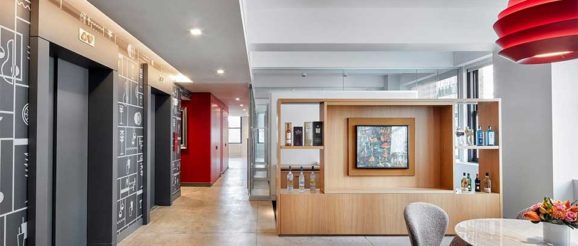Workplace Design – The Key to Creativity and Innovation > CEOWORLD magazine

Creativity and innovation are two essential elements of business which enable almost any company, start-up or mature, to succeed. Take one or both elements away, as it relates to the development, manufacture, marketing and/or distribution of a company’s product or service, and chances are the company will not be able to effectively or efficiently compete in the marketplace. When taken to the extreme, even if the company is at one point a market leader, the reality of becoming the next Kodak, Nokia, AOL, or Sears might not be too far off.
While it’s important and necessary for a company to understand creativity and innovation, and the impact they have on an organization in a strategic sense, it’s just as important to consider these items from a day-to-day or tactical perspective. At this level, what’s key to recognize is that creativity and innovation stems from the company’s employees, and that their creativity and innovation is driven, supported, and facilitated, in large part, by the environment in which they work.
For some employees, creative or innovative thought is best when working independently, for others it might be more of a collaborative process. For this reason, it makes sense to offer employees an option of private or collaborative space to work in. The same with desk type. Some employees might like to work at the same desk from day to day, while others might like to roam about an office and work at a different type of desk throughout the day. Some employees might find the peace and quiet of home or a remote location to be more conducive to creative and innovative thought than the office, so a company might offer employees the ability to work remotely and give them the necessary video conference and collaboration tools to connect with others.
Beyond space, desk type, and location, there’s a lot more within the office environment that plays into an employee’s ability to be creative and innovative. Take, for example, lighting. Lighting that mimics natural light, or even the exposure to natural light itself, has a dramatic effect on a person’s emotions, mood, and attitude towards work. The same can be said for a workplace that has plants and greenery versus one that doesn’t. Research has shown that the more we can bring from the outdoors to the indoors, the better it makes us feel. Another aspect to consider are items that help to support a work/life balance. Amenities like a full kitchen, bike storage with showers, and a maternity room, for example, all help to encourage a greater work/life balance, which in turn helps employees feel better and work better. Also, to know how diverse a workforce might be (i.e., generations, neurodiversity, personalities, etc.), it would serve in the company’s best interest to account for this. For instance, from a neurodiversity perspective, some people might have a higher sensitivity to sound so, knowing this a company might offer quiet spaces for these people to work in. Same with thermal comfort. Some prefer cold others warmth and, here too, a company might strive to find a way to balance this.
As much of the above speaks to creativity and innovation, it’s also useful to know that workplace design influences the overall productivity, well-being, and engagement an employee experiences with their daily tasks/responsibilities, colleagues, and the company in general. This, then, has a direct effect on a company’s ability to recruit and retain talent, something which companies new or old, large or small, across industries must contend with, especially as the size of the workforce continues to dwindle.
In addition, as a company may look to emulate the design features and components of another company’s workplace (e.g., Google, Amazon, tech start-ups, etc.), chances are this will not always translate into creative and/or innovative success. Because workforces differ from one company to another, as do a company’s mission, vision, brand, and competitive differentiators, there are no silver bullets or hard and fast rules for what workplace designs will drive creativity and innovation. Each company needs to conduct its own research and analysis, make its own workplace design decisions, and be less inclined to follow the pack or trends. This might also be when a company engages with an experienced architect or workplace designer to help guide in the process.
It is also worth mentioning that aside from the impact workplace design has on creativity and innovation, there is an opportunity cost associated with this as well. Should a company conclude that it’s not worth investing in changes to the workplace, the CEO and others in the C-suite might consider the research which indicates that millennials would rather work in a nicer office than earn a higher salary. This, in turn, goes back to the retention and recruitment of talent, and begs the question, without talent where does creativity and innovation stand, let alone the business overall?
As the companies mentioned in the first paragraph “blinked” when it came to being creative, innovative, and pro-active to the needs and demands of consumers and the marketplace in general, it is imperative for today’s CEOs not to blink when it comes to workplace design. For the reasons cited above, and many others, CEOs must ensure that their company offers an environment that truly supports and facilitates the creative and innovative process among its employees.
Have you read?
For those who are planning their next business trip, here are the best hotels for business travelers to stay in Adelaide, Perth, Auckland, Los Angeles, Charleston SC, Washington DC, and New Orleans.
The views expressed in this article are those of the author alone and not the CEOWORLD magazine.
We’d like to hear what you think about this or any of our articles. Here’s our email: [email protected].
Follow The CEOWORLD magazine on Facebook, Twitter (@ceoworld), Instagram, and LinkedIn.
